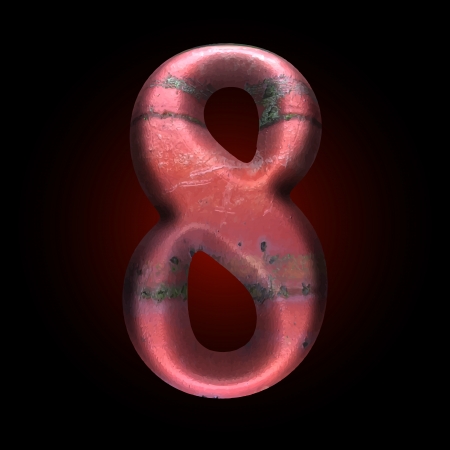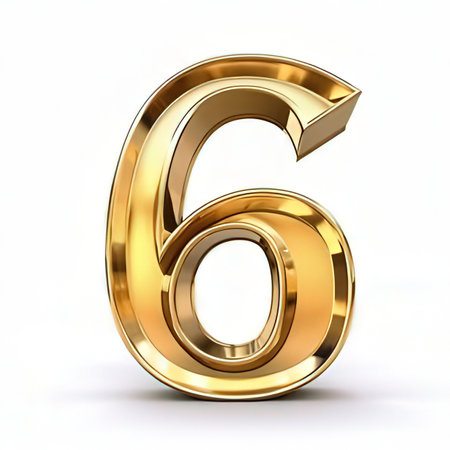Introduction to Runes in British Folklore
Runes have long captured the imagination of those interested in the hidden histories of Britain, their angular forms and cryptic meanings evoking a sense of ancient mystery. Though often associated with the Norse and Germanic peoples, runes also possess a fascinating legacy within British folklore, where their presence is woven through tales, legends, and historical artefacts. The enduring allure of runes lies not only in their use as an early alphabet but also in the symbolic power attributed to them—serving as tools for divination, protection, and storytelling. This introduction provides an overview of runes as enigmatic symbols that continue to inspire curiosity across the British Isles, forming an essential part of the nation’s rich cultural tapestry.
2. Early Roots: Arrival of Runes in the British Isles
The journey of runic scripts to the British Isles is a tale interwoven with migration, trade, and shifting cultural landscapes. The earliest evidence points towards the migration of Germanic tribes—primarily the Angles, Saxons, and Jutes—from Northern Europe and Scandinavia during the late Roman and early medieval periods. These groups brought with them not only their languages and customs but also the runic alphabets known as the Elder Futhark and later, the Anglo-Saxon Futhorc.
Archaeological finds across Britain, such as inscribed artefacts and grave goods, provide tangible proof of the presence and gradual adaptation of runes. Linguistic analysis further supports this, revealing how runes were assimilated into local dialects and used for both practical inscriptions and ritualistic purposes. Unlike Latin script, which was introduced by Christian missionaries, runes initially served as a tool for marking ownership, memorialising the dead, and invoking protection or magic.
Key Evidence of Runic Migration
| Site/Find | Location | Date | Description |
|---|---|---|---|
| Franks Casket | Northumbria | 8th Century | An elaborately carved whalebone box featuring both runic and Latin inscriptions. |
| Sandbach Crosses | Cheshire | 7th-9th Century | Stone crosses bearing early Christian motifs alongside runic carvings. |
| Kentish Buckle Inscription | Kent | 6th-7th Century | A belt buckle inscribed with Anglo-Saxon runes, indicating personal ownership. |
| Lindisfarne Stones | Northumberland | 7th-8th Century | Tombstones featuring a blend of runic symbols and Christian iconography. |
Linguistic Traces in Early English Dialects
The adoption of runes can also be traced through shifts in language. Old English texts show evidence of loanwords and naming conventions rooted in Old Norse and other Germanic tongues. For instance, place names ending in -by, -thorpe, or -ham reflect settlements established by Norse-speaking peoples who utilised runes for communication and record-keeping. Over time, these influences became embedded within British folklore traditions, further entwining runic heritage with local beliefs and practices.

3. Runes and Anglo-Saxon Culture
Runes became deeply woven into the fabric of Anglo-Saxon society, leaving their mark on a wide array of material culture and written records across Britain. As the Anglo-Saxons settled and established themselves from the 5th century onwards, they brought with them the runic script known as the futhorc—a distinct evolution of the original Germanic runes that adapted to the needs of Old English language.
The Use of Runes on Monuments
Perhaps most strikingly, runes can be found carved into stone monuments and memorials throughout England. The Ruthwell Cross in Scotland and the Bewcastle Cross in Cumbria are prominent examples, both featuring runic inscriptions alongside Christian iconography. These monuments highlight how runes were not only used for pagan or magical purposes but also became part of early Christian expression in Britain, serving as markers of memory, faith, and community identity.
Runes on Artefacts
Beyond monumental stones, runes appear on a variety of everyday objects—ranging from weapons and jewellery to combs and coins. The famous Franks Casket, a whalebone chest from the 8th century, is inscribed with elaborate runic text describing scenes from history and legend. This suggests that runes were valued for their communicative power as well as for their decorative potential, blending artistry with literacy in objects meant for both practical use and display.
Integration in Manuscripts
While Latin script eventually came to dominate manuscript production after Christianisation, several Old English manuscripts preserve evidence of runic knowledge among scribes. Runes were sometimes inserted into texts to represent sounds or words that did not have an exact Latin equivalent, or to invoke special meanings—often associated with secrecy, magic, or tradition. For example, the Exeter Book contains poems where runes are used as riddles or codes within the verses, pointing to a sophisticated understanding of their symbolic value even in literate circles.
Cultural Significance
The integration of runes into so many aspects of Anglo-Saxon life illustrates their enduring cultural resonance in Britain. They acted as bridges between oral tradition and written record, between pagan roots and Christian transformation. Today, these remnants offer invaluable insights into how early Britons navigated identity, spirituality, and communication through centuries of profound social change.
4. Symbolism and Interpretations in Local Traditions
Runes have long held a distinctive place within British folklore, not only as an ancient writing system but also as vessels of mystical meaning. Across the British Isles, local customs, superstitions, and oral storytelling have imbued runic symbols with layers of significance that extend well beyond their original Norse or Anglo-Saxon roots. In these traditions, runes are often perceived as tools for divination, protection, and the invocation of luck—each character carrying its own unique resonance within community beliefs.
Runes in Folk Customs
Many rural communities in Britain adapted runic symbols for use in charms and talismans. Blacksmiths, farmers, and healers inscribed certain runes onto everyday objects to guard against misfortune or malevolent forces. For example, the Algiz rune (ᛉ), resembling a protective elk’s antlers, was etched on doorways to shield households from harm. Similarly, the Gebo rune (ᚷ), representing gift or exchange, was associated with hospitality rituals and neighbourly goodwill.
Superstitions and Magical Associations
The link between runes and superstition is deeply rooted in oral traditions passed down through generations. Some regions believed that carrying a small stone marked with the Ansuz rune (ᚨ) could enhance communication skills or attract favourable outcomes in disputes. Conversely, the Thurisaz rune (ᚦ) was sometimes viewed with suspicion due to its connection with chaos or unpredictable energies.
Common Runes and Their Folk Meanings
| Rune | Name | Traditional Meaning | Folk Interpretation in Britain |
|---|---|---|---|
| ᛉ | Algiz | Protection | Ward off evil spirits; safe passage for travellers |
| ᚷ | Gebo | Gift/Exchange | Blessings for generosity; fostering community bonds |
| ᚨ | Ansuz | God/Odin/Communication | Aid in negotiations; clarity in speech or writing |
| ᚦ | Thurisaz | Giant/Conflict | Caution against reckless behaviour; used sparingly in charms |
The Role of Storytelling in Runic Lore
Oral storytelling has played a vital role in preserving the symbolic meanings of runes within British folk memory. Tales recounting encounters with cunning folk (local wise women or men) often feature the interpretation of rune-marked stones as omens—sometimes foretelling harvest success, at other times warning of impending storms or ill fortune. These stories not only reinforced communal knowledge but also provided practical guidance on when and how to employ certain runes.
Modern Echoes in Contemporary Practices
Today, echoes of these traditional interpretations can still be found among enthusiasts of British folklore and practitioners of modern paganism. Workshops exploring rune casting, local history tours highlighting carved stones, and even village fêtes occasionally reference these age-old associations—demonstrating how the symbolic legacy of runes continues to weave through the fabric of British cultural life.
5. Christianity and the Decline of Rune Usage
As Christianity began to take root across Britain from the late 6th century onwards, the perception and use of runes underwent a significant transformation. The arrival of Christian missionaries introduced not only a new religious paradigm but also the Latin alphabet, which was closely associated with Christian texts and authority. This shift marked a pivotal moment in the history of British runic tradition.
Initially, there was some coexistence between runic script and Christian practice. Early Anglo-Saxon Christians occasionally inscribed runes on gravestones or church objects, blending traditional symbols with emerging Christian iconography. However, as ecclesiastical structures solidified their influence, attitudes toward runes grew increasingly ambivalent and, eventually, hostile. Church leaders often regarded runes as relics of paganism or superstition, associating them with magical practices and pre-Christian beliefs that were incompatible with orthodox doctrine.
The suppression of runic writing became more pronounced as the Latin script gained dominance in both religious and administrative contexts. Monasteries and scriptoria played a central role in this transition, producing manuscripts exclusively in Latin characters and promoting standardised forms of communication that distanced themselves from indigenous scripts. Over time, the use of runes receded into marginal contexts, surviving mainly in folk charms or rural traditions far removed from centres of ecclesiastical power.
Despite this decline, echoes of the earlier runic heritage persisted within British folklore. In some regions, stories lingered about stones bearing mysterious marks or about wise individuals who could read ancient signs. These narratives reflected a lingering respect for the symbolic potency of runes while also acknowledging their diminished status in an increasingly Christianised society.
In sum, the rise of Christianity was instrumental in redefining the cultural value and practical function of runes within Britain. The adoption of the Latin alphabet did not merely introduce a new system of writing; it signalled a broader transformation in identity, belief, and communal memory—one that pushed runic literacy to the fringes while reshaping the landscape of British folklore for centuries to come.
6. Modern Revivals and Contemporary Interest
The fascination with runes has experienced a remarkable resurgence in present-day British culture, reflecting both a revival of ancient traditions and the evolution of new interpretations. This renewed interest stems from several distinct yet interconnected avenues, each contributing to the vibrant tapestry of contemporary rune appreciation.
Neopaganism and Spiritual Practices
In recent decades, the neopagan movement in Britain has played a significant role in reintroducing runes as tools for divination, meditation, and personal growth. Many practitioners of modern Druidry, Heathenry, and eclectic pagan paths incorporate runic symbols into rituals and spiritual practices. These groups often seek to reconnect with what they perceive as the mystical heritage of the British Isles, blending historical knowledge with intuitive exploration. Runes are seen not only as an alphabet but also as gateways to ancestral wisdom and natural forces.
Popular Media and Cultural Representation
Runes have also become increasingly visible in popular media, including literature, television series, films, and video games produced or widely consumed in the UK. Works inspired by Norse mythology or British folklore frequently feature runic motifs, which serve as visual shorthand for mystery, magic, or ancient power. This exposure has broadened public awareness of runes beyond academic circles or spiritual communities, making them accessible to a new generation of enthusiasts.
Academic Research and Public Engagement
The academic study of runes remains robust within British universities and museums. Researchers continue to unearth new findings about the distribution, usage, and meaning of runic inscriptions found across the British Isles. Institutions such as the British Museum actively engage the public through exhibitions and educational programmes that highlight artefacts bearing runic marks. The intersection between scholarly research and public curiosity helps ensure that runes are understood both as historical artefacts and living symbols.
Community Events and Workshops
Across Britain, community-driven events—ranging from workshops on carving runes to public lectures—provide hands-on opportunities for people to explore these ancient scripts. These gatherings foster dialogue between experts and laypeople alike, encouraging a spirit of experimentation alongside respect for historical sources.
A Living Tradition
In sum, the contemporary revival of runes in Britain is multifaceted, encompassing spiritual exploration, cultural representation, academic inquiry, and community engagement. While rooted in centuries-old tradition, todays interest in runes reflects an ongoing process of reinterpretation—a testament to their enduring appeal within the fabric of British folklore.


